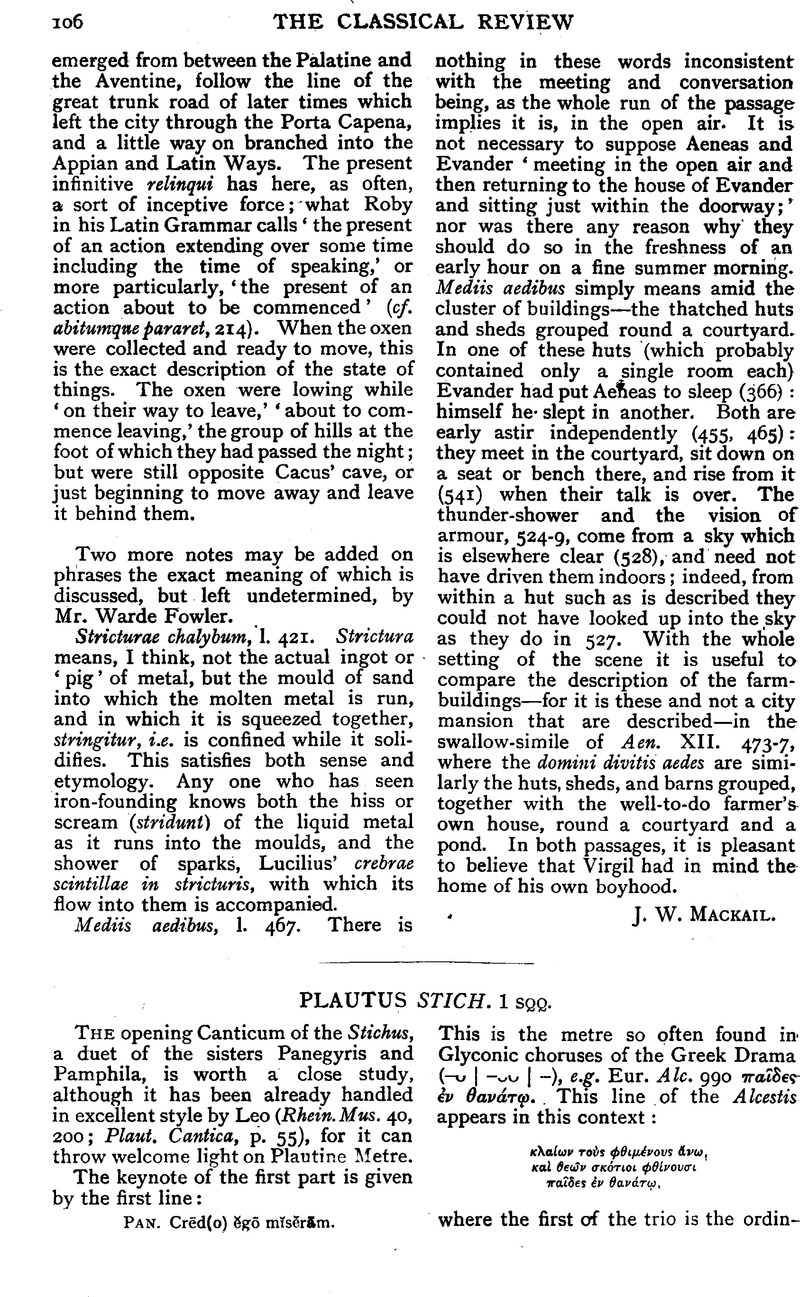No CrossRef data available.
Article contents
Abstract

- Type
- Original Contributions
- Information
- Copyright
- Copyright © The Classical Association 1918
References
page 107 note 1 No one, surely, in the land of Bentley and Porson has been perverted by that horrid heresy, the scansion cuī flāvām re|lîgās cômām. See Amer.Journ. Phil. 37, 37.
page 107 note 2 The colloquial form of the Gen. Sing, of is and qui was a monosyllable (at any rate, of two ‘morae’) in Plautus' time as in Cicero's (cf. Munro on Lucr. 1, 149) and Virgil's (to judge from Catal. 9, 35 non cuius ob raptum pulsi liquere penates).
page 107 note 3 Editors of Euripides seem to call such a line as Bacch. 863 a Colon Reizianum. But surely it is a syncopated Pherecratean (![]() ) in this context, just as in 868–9:
) in this context, just as in 868–9:
![]()
the second line is syncopated ‘Glyconic.’
page 107 note 4 Of course the final m must be elided in Plautus as in Virgil.
page 108 note 1 When Nonius labels virum, nummum (such phrases as trium virum, trium nummum) as ‘Acc. Sing, for Gen. Plur.,’ it is unfair to say with Lucian Mueller, ‘nugatur Nonius.’ That is merely a rough-and-ready teaching-formula like our ‘At a place is expressed by the Gen. Sing.’


